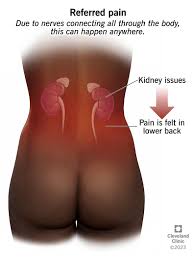Continuing Professional Development: Investing in Your Future
Continuing Professional Development (CPD) is a vital aspect of career growth and success in today’s rapidly evolving work environment. It refers to the process of learning and developing new skills, knowledge, and expertise that are relevant to one’s profession. CPD is not only beneficial for individual professionals but also for organizations seeking to stay competitive and innovative.
One of the key benefits of engaging in CPD is the opportunity to stay up-to-date with the latest industry trends, technologies, and best practices. As industries evolve and new developments emerge, professionals need to adapt and acquire new skills to remain relevant and competitive in their field. CPD provides a structured framework for continuous learning and improvement, ensuring that professionals are equipped to meet the demands of their roles.
Furthermore, CPD can enhance job satisfaction and motivation by allowing individuals to pursue areas of interest within their profession. By engaging in CPD activities that align with their career goals and interests, professionals can feel more fulfilled and motivated in their work. This sense of fulfillment often leads to increased productivity, creativity, and job performance.
In addition to personal growth, CPD can also benefit organizations by fostering a culture of learning and development. Companies that prioritize CPD demonstrate a commitment to employee growth and well-being, which can lead to higher employee retention rates, improved morale, and a more skilled workforce. Moreover, employees who engage in CPD are better equipped to contribute innovative ideas, solve complex problems, and drive organizational success.
There are various ways professionals can engage in CPD activities, including attending workshops, seminars, conferences, pursuing further education or certifications, participating in online courses or webinars, reading industry publications, engaging in mentorship programs, or seeking feedback from peers or supervisors.
Ultimately, continuing professional development is an investment in oneself and one’s future. By dedicating time and effort to ongoing learning and skill development, professionals can enhance their career prospects, adapt to changing market demands, and achieve long-term success in their chosen field.
Essential FAQs About Continuing Professional Development: Importance, Tracking, Benefits, Requirements, and Time Management
- What is Continuing Professional Development (CPD) and why is it important?
- How can I track my CPD activities and progress?
- What are the benefits of engaging in CPD for my career?
- Are there specific requirements or guidelines for CPD in my industry?
- What are some effective ways to incorporate CPD into my busy schedule?
What is Continuing Professional Development (CPD) and why is it important?
Continuing Professional Development (CPD) encompasses the ongoing process of learning, acquiring new skills, and expanding knowledge relevant to one’s profession. It is crucial for professionals to engage in CPD to stay abreast of industry advancements, trends, and best practices. By participating in CPD activities, individuals can enhance their expertise, adapt to evolving job requirements, and remain competitive in their field. CPD also promotes personal growth, job satisfaction, and career advancement by providing opportunities for skill development and professional networking. In today’s dynamic work environment, where change is constant and innovation is key, embracing CPD is essential for both individual career progression and organizational success.
How can I track my CPD activities and progress?
Tracking your Continuing Professional Development (CPD) activities and progress is essential for staying organized and ensuring that you are meeting your learning goals. One effective way to track your CPD activities is to maintain a detailed log or portfolio where you document the activities you have completed, the skills you have acquired, and the knowledge you have gained. This log can include information such as the date of each activity, the duration, the learning outcomes, and any certificates or evidence of completion. Additionally, there are various online platforms and tools available that can help you track your CPD progress more efficiently, providing reminders, tracking deadlines, and generating reports to monitor your development over time. By actively monitoring and recording your CPD activities, you can assess your progress, identify areas for improvement, and demonstrate your commitment to lifelong learning and professional growth.
What are the benefits of engaging in CPD for my career?
Engaging in Continuing Professional Development (CPD) offers numerous benefits for your career advancement. By participating in CPD activities, you can stay current with industry trends and best practices, ensuring that your skills remain relevant and competitive. CPD also provides opportunities to expand your knowledge base, develop new expertise, and enhance your professional capabilities. Additionally, investing in CPD demonstrates a commitment to lifelong learning and personal growth, which can boost your credibility, marketability, and overall career prospects. Ultimately, engaging in CPD not only enriches your skill set but also positions you as a proactive and forward-thinking professional in today’s dynamic work environment.
Are there specific requirements or guidelines for CPD in my industry?
Many industries have specific requirements or guidelines for Continuing Professional Development (CPD) to ensure that professionals maintain high standards of competence and ethical practice. These requirements may vary depending on the industry, regulatory bodies, professional associations, or licensing boards. It is essential for professionals to familiarize themselves with the CPD requirements relevant to their industry to meet certification or licensing obligations and stay current with industry standards. By adhering to industry-specific CPD guidelines, professionals can demonstrate their commitment to ongoing learning and development while upholding the integrity and professionalism of their field.
What are some effective ways to incorporate CPD into my busy schedule?
Many professionals face the challenge of incorporating Continuing Professional Development (CPD) into their busy schedules. One effective way to overcome this obstacle is to prioritize CPD activities by scheduling dedicated time for learning and development. This could involve setting aside specific hours each week for online courses, workshops, or reading industry publications. Additionally, leveraging technology can be beneficial, such as listening to podcasts or participating in webinars during commutes or lunch breaks. Another strategy is to integrate CPD into daily routines by incorporating short learning sessions or skill-building exercises into work breaks or downtime. By being intentional and proactive in planning and structuring CPD activities, professionals can effectively balance their busy schedules while investing in their professional growth and development.




